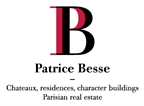A 15th-century chateau, listed as a historical monument, its dwellings, pond and unoccupied pastureland, the whole resembling a peaceful hamlet on 56
A 15th-century chateau, listed as a historical monument, its dwellings, pond and unoccupied pastureland, the whole resembling a peaceful hamlet on 56 hectares in the historic Bourbonnais province.
In the Allier department, the Sologne Bourbonnaise is a natural region between the Loire and Allier Rivers, with wooded landscapes and verdant hills, scattered with streams, ponds, forests and pastures. In addition, the former Bourbonnais province evokes the notable historical lineage of the Dukes of Bourbon who would eventually beget the Kings of France from Henri IV to Charles X. This region, with its authentic and unspoiled heritage, is also remarkable thanks to its plethora of Romanesque churches, feudal mounds, fortresses and medieval castles as well as immense farm properties from the 19th century.
In the middle of France, the cities of Vichy, Moulins, Bourbon-Lancy and Paray-le-Monial, with all shops and services, are accessible in 40 minutes, while, via the SNCF train station in Moulins, Paris is reachable in 2.5 hours. Now easily accessible via the A79 motorway, this region is also only 2.5 hours from Lyon and 3 hours from Geneva by car.
The name of the village translates into English as "stone chateau" and, perched on a rocky outcrop, the fortified chateau with its adjacent Romanesque church has overlooked the surrounding rural countryside since the 11th century. The property for sale takes up a large part of the neighbouring village of one hundred inhabitants with its chateau, four dwellings and a farm, all on a parcel of real estate totalling 56 hectares of unoccupied pastureland, woods and a large pond.
The ChateauOriginally equipped with a complete defence system composed of enclosure walls, towers and an outer bailey, the fortress was then modified over the course of the 15th century, which preserved only the dwelling and defensive tower to the north. A farm and community hub after the French Revolution and up until the 20th century, the building has changed little structurally: organised around an enclosed courtyard with a well at its centre, the chateau was built out of stone over a basement level and under a flat tile roof. With four windows with a single crossbar on its village-facing exterior, its courtyard side is more ornate with a Gothic door and large-cross windows. Listed as a Historical Monument since 1929, its renovations over the past several decades have successfully preserved the property's heart and soul thanks to pure and simple materials combined with special care and skill.
The ground floor
The dwelling is divided by a shear wall into two large rooms of approximately 85 and 45 m², respectively, which are decorated with terracotta floor tiles, light-colour Burgundy or darker Volvic flagstones as well as exposed ceiling beams, heavily plaster-coated walls and two immense Gothic stone fireplaces, one of which is topped with a sculpted lintel. As for the kitchen, it includes oak furnishings made from one of the building's ancient beams. Following on from here, in the southern wing, a room is used as both a study and utility room with a shower room, while the northern tower includes a vaulted room, and two spiral staircases - a modern one made out of carefully crafted concrete and an ancient stone one - provide access to the upper floors.
The first floor
With the same layout, this level has terracotta floor tiles and is composed of an immense living room-library as well as four bedrooms, almost all of which have an adjacent shower room. In addition, one of the massive fireplaces is topped with a lintel painted with the La Palice family's lordly coat-of-arms.
The second floor
Rudimentarily created under the eaves in the southern wing, a bedroom and a shower room precede the towering wooden rafters of the central building. To the north, an exterior ...


